No, there is no easy way. Since NESTED_ML_COMMENT is a lexer rule (a "simple" token), you cannot let a parser rule create any more structure in source like /*test2/*nested*/comment*/: lexer rules will always stay a "flat" sequence of characters. Sure, there are (easy) ways to rewrite this character sequence (ie. remove /* and */), but creating parent-sibling hierarchies, no.
In order to create a hierarchy like you displayed in your 2nd image, you will have to "promote" your comment-rule to the parser (so make it into a parser rule). In that case, your lexer would have a COMMENT_START : '/*'; and COMMENT_END : '*/'; rule. But that opens a can of worms: inside your lexer you would now also need to account for all characters that can come between /* and */.
You could create another parser that parses (nested) comments and use that inside your CSS grammar. Inside your CSS grammar, you simply keep it as it is, and your second parser is a dedicated comments-parser that creates a hierarchy from the comment-tokens.
A quick demo. The grammar:
grammar T;
parse
: comment EOF
;
comment
: COMMENT_START (ANY | comment)* COMMENT_END
;
COMMENT_START : '/*';
COMMENT_END : '*/';
ANY : . ;
will parse the source /*test2/*nested*/comment*/ into the following parse tree:

which you can rewrite so that /* and */ are removed, of course.
Inside your CSS grammar, you then do:
comment
: NESTED_ML_COMMENT
{
text = $NESTED_ML_COMMENT.text
# invoke the TParser (my demo grammar) on `text`
}
;
EDIT
Note that ANTLRWorks creates it's own internal parse tree to which you have no access. If you do not tell ANTLR to generate a proper AST, you will just end up with a flat list of tokens (even though ANTLRWorks suggests it is some sort of tree).
Here's a previous Q&A that explains how to create a proper AST: How to output the AST built using ANTLR?
Now let's get back to the "comment" grammar I posted above. I'll rename the ANY rule to TEXT. At the moment, this rule only matches a single character at a time. But it's more convenient to let it match all the way up to the next /* or */. This can be done by introducing a plain Python method in the lexer class that performs this check. Inside the TEXT rule, we'll use that method inside a predicate so that * gets matched if it's not directly followed by a /, and a / gets matched if it's not directly followed by a *:
grammar Comment;
options {
output=AST;
language=Python;
}
tokens {
COMMENT;
}
@lexer::members {
def not_part_of_comment(self):
current = self.input.LA(1)
next = self.input.LA(2)
if current == ord('*'): return next != ord('/')
if current == ord('/'): return next != ord('*')
return True
}
parse
: comment EOF -> comment
;
comment
: COMMENT_START atom* COMMENT_END -> ^(COMMENT atom*)
;
atom
: TEXT
| comment
;
COMMENT_START : '/*';
COMMENT_END : '*/';
TEXT : ({self.not_part_of_comment()}?=> . )+ ;
Find out more about the predicate syntax, { boolean_expression }?=>, in this Q&A: What is a 'semantic predicate' in ANTLR?
To test this all, make sure you have the proper Python runtime libraries installed (see the ANTLR Wiki). And be sure to use ANTLR version 3.1.3 with this runtime.
Generate the lexer- and parser like this:
java -cp antlr-3.1.3.jar org.antlr.Tool Comment.g
and test the lexer and parser with the following Python script:
#!/usr/bin/env python
import antlr3
from antlr3 import *
from antlr3.tree import *
from CommentLexer import *
from CommentParser import *
# http://www.antlr.org/wiki/display/ANTLR3/Python+runtime
# http://www.antlr.org/download/antlr-3.1.3.jar
def print_level_order(tree, indent):
print '{0}{1}'.format(' '*indent, tree.text)
for child in tree.getChildren():
print_level_order(child, indent+1)
input = '/*aaa1/*bbb/*ccc*/*/aaa2*/'
char_stream = antlr3.ANTLRStringStream(input)
lexer = CommentLexer(char_stream)
tokens = antlr3.CommonTokenStream(lexer)
parser = CommentParser(tokens)
tree = parser.parse().tree
print_level_order(tree, 0)
As you can see, from the source "/*aaa1/*bbb/*ccc*/*/aaa2*/", the following AST is created:
COMMENT
aaa1
COMMENT
bbb
COMMENT
ccc
aaa2
EDIT II
I mind as well show how you can invoke the Comment parser from your CSS grammar. Here's a quick demo:
grammar CSS;
options {
output=AST;
language=Python;
}
tokens {
CSS_FILE;
RULE;
BLOCK;
DECLARATION;
}
@parser::header {
import antlr3
from antlr3 import *
from antlr3.tree import *
from CommentLexer import *
from CommentParser import *
}
@parser::members {
def parse_comment(self, text):
lexer = CommentLexer(antlr3.ANTLRStringStream(text))
parser = CommentParser(antlr3.CommonTokenStream(lexer))
return parser.parse().tree
}
parse
: atom+ EOF -> ^(CSS_FILE atom+)
;
atom
: rule
| Comment -> {self.parse_comment($Comment.text)}
;
rule
: Identifier declarationBlock -> ^(RULE Identifier declarationBlock)
;
declarationBlock
: '{' declaration+ '}' -> ^(BLOCK declaration+)
;
declaration
: a=Identifier ':' b=Identifier ';' -> ^(DECLARATION $a $b)
;
Identifier
: ('a'..'z' | 'A'..'Z') ('a'..'z' | 'A'..'Z' | '0'..'9')*
;
Comment
: '/*' (options {greedy=false;} : Comment | . )* '*/'
;
Space
: (' ' | '\t' | '\r' | '\n') {$channel=HIDDEN;}
;
If you parse the source:
h1 { a: b; c: d;}
/*aaa1/*bbb/*ccc*/*/aaa2*/
p {x : y;}
with the CSSParser, you'll get the following tree:
CSS_FILE
RULE
h1
BLOCK
DECLARATION
a
b
DECLARATION
c
d
COMMENT
aaa1
COMMENT
bbb
COMMENT
ccc
aaa2
RULE
p
BLOCK
DECLARATION
x
y
as you can see by running this test script:
#!/usr/bin/env python
import antlr3
from antlr3 import *
from antlr3.tree import *
from CSSLexer import *
from CSSParser import *
def print_level_order(tree, indent):
print '{0}{1}'.format(' '*indent, tree.text)
for child in tree.getChildren():
print_level_order(child, indent+1)
input = 'h1 { a: b; c: d;}\n\n/*aaa1/*bbb/*ccc*/*/aaa2*/\n\np {x : y;}'
char_stream = antlr3.ANTLRStringStream(input)
lexer = CSSLexer(char_stream)
tokens = antlr3.CommonTokenStream(lexer)
parser = CSSParser(tokens)
tree = parser.parse().tree
print_level_order(tree, 0)


